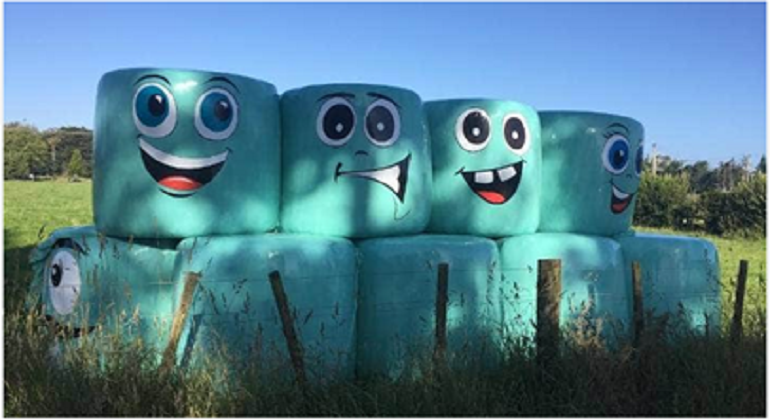Kildare County Council guidance on Silage effluent management
Kildare County Council issues guidance to Farmers on managing silage effluent to protect water quality
Kildare County Council has issued guidance for farmers on the safe management of silage effluent on farmland to protect water quality. Silage effluent can cause serious pollution of waters or contaminate drinking water supplies if not collected, stored and applied properly to land, therefore safe management is essential.
In the first instance, farmers are advised to ensure that silage storage facilities are fit for purpose before this year’s silage season. The silage pit and silage effluent collection and storage facilities must meet the standards required by the Department of Agriculture, Food and the Marine (DAFM).
Silage pits, slabs and walls, need to be structurally sound to ensure ensiling is completed within a leak proof structure. Silage effluent collection channels and tank storage must be capable of storing the volume of all effluent generated.
While silage pits are empty, this is a good time to examine the silage pit slabs, walls and channels to examine, in a safe manner, what maintenance and repairs are needed before the silage pit is used again in 2024.
Maintenance checks
The first step is to wash down the silage pit floor, effluent channels and surrounding walls using a power washer. Check for cracks, porous patches, unsealed and eroded joints. The extent of the damage can be assessed by hacking away any unsound concrete at joints and at the base of walls. The silage pit, channels and collection tanks must be leak-proof and all of the silage effluent must be collected and safely stored. If the pit is not fit for purpose, cease using until all repairs are completed.
Repair works must be completed to Department of Agriculture, Food and the Marine (DAFM) specifications for Concrete Silage Bases S128 and Resurfacing of Silo Floors S128A.
Regular maintenance of the silage pit ensures that minor problems can be rectified before they escalate to more serious issues.
Silage storage
Problems with silage effluent management can arise when silage is ensiled in a larger quantity than the slab is designed to hold. Additional silage should be stored on another slab or made into round bales.
All silage should be stored on a concrete base. Pit silage should not be stored on a hardcore base even if it is very dry silage and was made during ideal conditions.
When cutting silage aim to wilt the grass for 24 hours before ensiling. This will help reduce the volume of silage effluent produced. All effluent should enter the channels under the cover of the silage polythene and the edge of the ensiled grass should not extend onto or over any channel. The open space is maintained by placing a plastic drainage pipe in the channel.
Regularly check effluent diversion units, yard gullies or other possible underground escape routes. During the ensiling period, make sure that all effluent is diverted into the underground slurry tank or effluent tank. Make sure that these channels are free of any debris and that the effluent can flow unrestricted.
Where a suitable wilt is not possible due to wet weather, it is advisable to provide additional drainage pipes to help ensure that the liquid gets away. For example, additional pipes could be laid at the butt of clamp walls or for long clamps; additional pipes could be laid across the pit.
These will help relieve the pressure build up from the effluent and reduce the possibility of the pit slipping.
To prevent effluent from flowing out over silage walls in the first few days, it is important not to pile the grass too high over the walls and to slope the grass back at a 45˚ angle from the top of the walls. All effluent should be collected and channelled into an underground slurry or effluent tank.
Land Spreading
When land spreading silage effluent, dilute the effluent with one part water/slurry to one part effluent. Do not spread if heavy rain is forecasted within 48 hours or if the land is already waterlogged or frozen. Do not spread within 20m of a lake shoreline or within 5m of any surface waters. This distance increases to 10m for a period of two weeks preceding and two weeks following the 1st October and 12th January, within 10m of any surface water where the land has an average incline greater than 10% towards the water, or within 25 – 200m of a well/public water supply.
Allowing silage effluent to discharge to a drain or watercourse is an offence under the Local Government (Water Pollution) Act, 1977 as amended by the Local Government (Water Pollution) (Amendment) Act, 1990 and the European Communities (Good Agricultural Practice for the Protection of Waters) Regulations, 2022.
Silage bales, including dry matter silage or haylage, can only be stored a maximum of two bales high, in the absence of adequate facilities for the collection and storage of any effluent that may arise.
Silage bales shall be stored at least 20m from surface water or a drinking water abstraction point, as required under the European Communities (Good Agricultural Practice for the Protection of Waters) Regulations, 2022 (GAP) regulations. These requirements also apply to the storage of haylage.
For further information on the Nitrates Regulations or any other queries you may have regarding protecting water quality, please contact the Environment Section of Kildare County Council on 045-980588 or alternatively at environ@kildarecoco.ie









.jpg)


